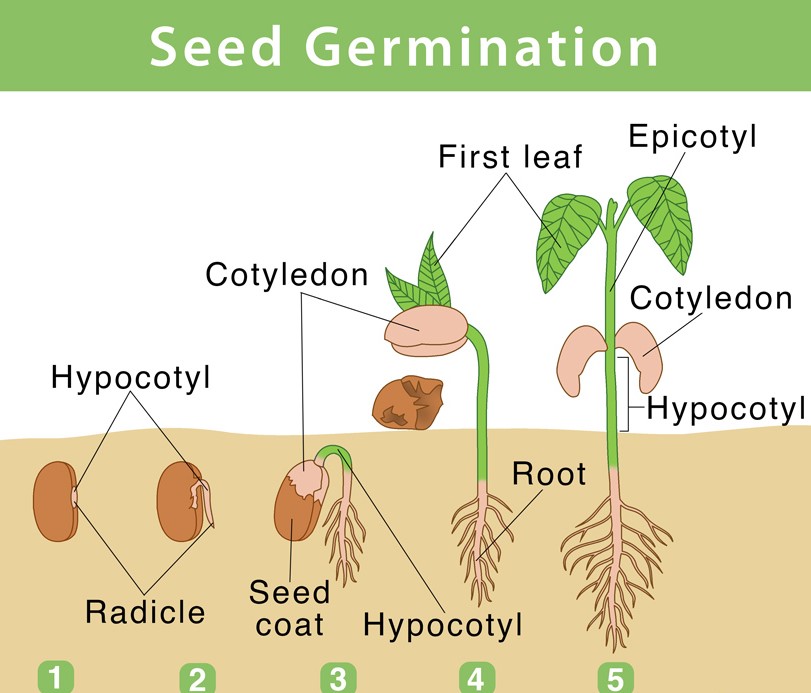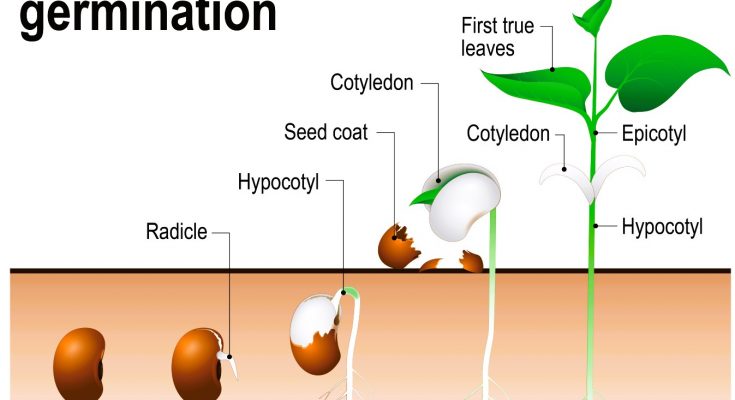WHAT IS A SEED?
Seed is the ripened ovule. It contains an embryo which develops into a new plant. The seed coat protects the embryo from mechanical damage.
Define Germination
Germination is the process of formation of a seedling developed from the embryo of the Seed.
What is Germination? – Explanation
- The seed contains a dormant embryo. In a dry seed, the embryo is inactive. It is said to be in a state of dormancy (a period of rest.)
- Dry seed appears to be without life, but in fact all the chemical activities of life are going on in it, although they are very slow and little food is utilized.
- The dry seeds consume oxygen and give out carbon dioxide, both in extremely minute quantities, and they release some heat as well.
- When placed under proper conditions, the dormant embryo awakens, i.e. it becomes active and starts growing into a seedling.
- All the changes leading to the formation of a seedling are collectively called germination.
A fresh seed from a plant normally does not germinate even if the conditions for germination are favorable. It must pass through a period of dormancy during which it undergoes physiological Maturation.
Seed Germination Diagram

Condition Necessary for Seed Germination
4 Conditions Necessary for Germination
- Water
- Suitable Temperature
- Air (oxygen)
- Other factors – Light, Fungus partner, Host Plant , Ph etc
Water
- The seed obtains water from its environment, i.e. from the soil, in natural conditions.
- The water is absorbed all over the surface but mainly through the micropyle.
2 important reasons of water requirement for germination
- The seed swells and consequently the seed coat ruptures allowing the elongating radicle to come out and form the root system.
- Water is necessary for chemical reactions and for the enzymes to act upon the food stored in the cotyledons or endosperm so that it may convert into a diffusible (dissolved) form that can be utilized by the growing embryo.
Suitable temperature
- Both very low and very high temperatures are unsuitable for germination.
- A very low temperature inhibits the growth of the embryo and a very high temperature destroys its delicate tissues.
- A moderately warm temperature (25°C to 35°C) is usually favorable for germination which is also called optimum temperature.
- Seeds of tropical plants often need a higher temperature for germination than those of the temperate regions.
Oxygen
- During germination there is rapid cell division and cell growth for which energy is required.
- This energy is available only by respiration (oxidation of food) and hence the need for oxygen (or air).


4 Comments on “What is Germination Class 10th”